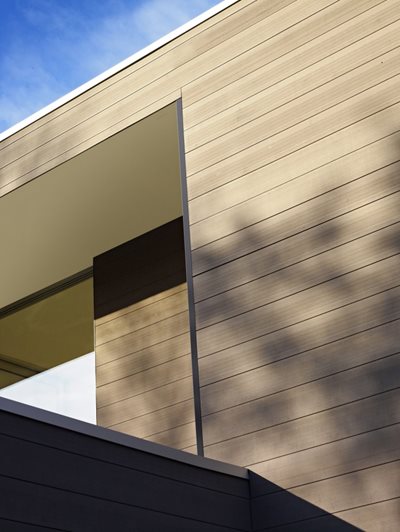The strengths of WPC façade cladding
The material has a wide range of beneficial qualities thanks to its composition. WPC façade panels consist of wood, plastic and filling agents. This combination is used to make extremely long lasting façade cladding. WPC façade cladding is not subject to rotting, a feature that protects it from biological degradation and chemical decomposition. In addition to being robust and strong, WPC is highly flexible. This characteristic simplifies the job of installing the individual façade panels and the WPC planks used in the façades.
WPC façade panels are also extremely weather-proof. As a result, residents can rest assured that the WPC façade cladding will reliably protect them from rain. They also do not have to worry about moisture seeping into their homes and the musty odours, bacteria and mould that can arise from it. The material will not expand during extreme weather conditions or splinter. While moisture, cold and extreme heat are kept outside, the energy used inside the house and the resources related to it can be optimally and efficiently used and will be largely kept in the building.
The polymer-wood composite comes in a range of appealing designs, colours and styles that you can choose from. The WPC façade cladding is treated with high-quality UV protective pigments and heat stabilizers, features that create a strong line of defence against intensive sunshine and other unfriendly weather elements. The material is very low maintenance and does not splinter or split. There is no need to paint as a result.
